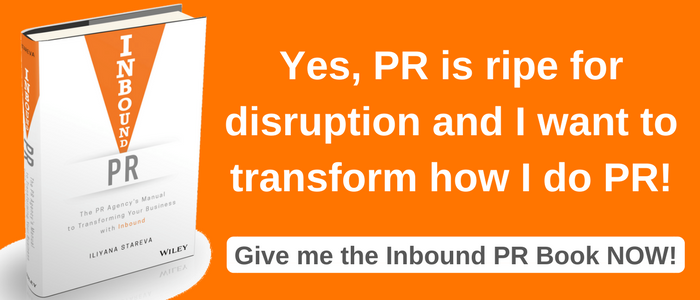 We know that PR is so much more than just media relations.
We know that PR is so much more than just media relations.
But the media hasn't gone away and remains a valuable source to spread the word about our business, especially in B2B or more complicated industries.
Media relations, though, is done pretty badly. Journalists don't really like PR professionals because they spam them with non-stop emails and phone calls. The worst part is that the content of those pitches is irrelevant or not of interest for the journalist.
So how do you do it right? I've written a whole blog post on doing media relations the inbound way, however, what I want to show you today are some stats from Muck Rack's latest research on how journalists use social media that support the points I make in the mentioned blog post.
5 Tips on How to Pitch the Media
1. When pitching, then pitch on Twitter
By far, Twitter is the social media winner among journalists. 96% of the surveyed professionals put it at the top when it comes to weekly usage. Facebook follows at 92% and LinkedIn at 60%.
In terms of providing value, 70% of journalists also say that Twitter is most important for them, followed by Facebook at 22% and LinkedIn at only 5%. In addition, 52% of respondents believe that they'll be spending even more time on Twitter next year.
What's more, 72% of journalists don't like receiving phone calls from PR pros to pitch them.
Your key learning here should be to find the channels that each journalist you want to reach out prefers and then use that rather than sticking with your comfort zone of phone and email.
2. Get comfortable getting up early
Early in the morning seems to be the best time to reach out to journalists - 37% of them admit that the best time to pitch them is 9am to 11am and 27% of them say it's 6am to 9am.
Either from home or while they are commuting to work, journalists are most probably on their phones and on Twitter - so catch them when they are most likely to pay attention to you.
In fact, 22% of them would ignore a relevant pitch when the timing is bad.
3. Make it personal
Journalists get thousands of pitches, emails and phone calls a day. That's why they really don't like PR professionals.
What's more, many of those pitches include information that's not even close to what these journalists care about, the topics they work on or what their audiences are interested in. (Please don't tell me you are different; yes, maybe you are but from personal experience, I receive at a minimum 2-3 completely unrelated to what I do and write about press releases a day. And I'm just an influencer not a journalist.)
In addition to topic relevancy, 24% of them will ingore a relevant story pitch when there's no personalisation and 52% really don't like receiving pitches via mass distribution lists.
We all like to feel special, so instead of trying to mass email 500 journalists, focus on five but do it right - get to know them and figure out how you can help them. Then pitch with that.
4. Keep it professional
With the mass of pitches that journalists receive, it's only natural that you want to stand out.
Do that with your content, though, by making sure it's relevant to the journalist's audience (38%), it's connected to a trending story (28%) or it includes a strong image (19%), however, do not use emojis in your pitch - 79% admit this is a no-go.
5. Pay it forward
Just as any company or professional, journalists are also building their brands and profiles. In fact, 72% of them track how many times their stories are shared on social media in order to see the impact.
As a PR pro, your engagement with the media should never be a one-off. It's supposed to be a relationship that's mutually beneficial which means that once a journalist helps you, you need to give back and share their work. Ideally, even more than just the pieces they write for you. Be truly engaged, read and follow what they do, comment, like and share. They'll remember it and unconsciously come back to you for more. That's pull vs. push or inbound vs. outbound.
What else has worked for you well when pitching journalists?







